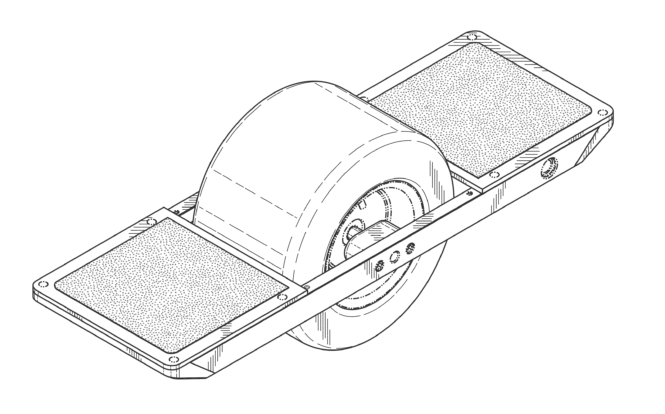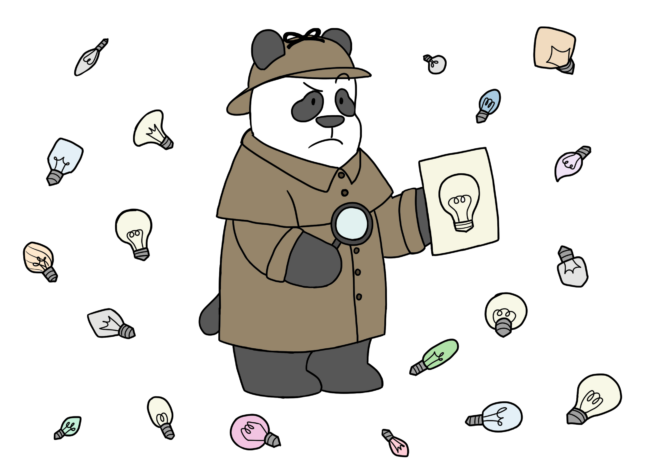A lightbulb moment can spark an innovative invention idea, but how do you protect it from being copied or exploited? Navigating the patent landscape is a critical step for inventors who seek to safeguard their ingenuity.
Understanding this complex terrain offers inventors many benefits, including legal protection, exclusive rights, and potential commercial advantages. The journey begins with an understanding of intellectual property and the types of patents available: utility, design, and plant patents.
Understanding Intellectual Property and Patents

Intellectual property (IP) is an essential catalyst for innovation, encompassing inventions, creative works, symbols, names, and designs. These intangible assets foster growth, competitiveness, and economic prosperity. One cornerstone of IP protection is patents.
They grant exclusive rights to inventors, allowing them to prevent others from making, using, or selling their invention for a set period, typically 20 years. This protection encourages inventors to invest time, energy, and resources into developing new products and technologies, thereby spurring progress across various sectors.
Importance of Patenting Your Invention Idea
Patenting your invention idea can serve as a solid foundation for commercial success. The exclusive rights conferred by patents offer inventors a competitive edge, enabling them to monopolize their inventions in the market.
This exclusivity can be a magnet for investors, increasing your chances of securing funding. Moreover, it creates a legal boundary that deters potential infringers, thus safeguarding your invention from unauthorized use.
Exploring Different Types
Patents are not a one-size-fits-all solution. The United States Patent and Trademark Office (USPTO) issues three types of patents: utility, design, and plant patents. Each type offers specific protection, tailored to different aspects of your invention. Your invention’s nature, functionality, and aesthetics will determine the most suitable type.
Design Patents: Safeguarding Aesthetic and Ornamental Designs

Design patents offer protection for the unique and ornamental appearance of a product. Unlike utility types, they do not cover functional aspects. Instead, design patents protect the way an invention looks, ensuring that its unique aesthetic features remain exclusive to the inventor.
This type of patent is particularly useful for industries where design and aesthetics are paramount, such as fashion and consumer products.
Utility Patents: Protecting Functional Inventions
Utility patents are the most common, protecting inventions that offer a new and useful process, machine, article of manufacture, or composition of matter. They safeguard the functional aspects of your invention, including the way it works and the methods used in its creation. Utility patents have a broad scope, making them a powerful tool for protecting innovative ideas.
Plant Patents: Patenting New Plant Varieties

Plant patents are a specialized patent category, granting rights to individuals or corporations that invent or discover and asexually reproduce a new and distinct variety of plant. These are quite niche, pertaining solely to the realm of horticulture and botany.
Whether you’ve created a new type of rose with a unique hue or a more drought-resistant crop that could revolutionize agriculture, plant patents are there to protect your horticultural innovations. By offering exclusive rights to these advancements, plant types can drive further research and development in the field, fostering a healthier and more diverse natural world.
Considerations for Patent Selection
Choosing the right patent type is not a decision to be taken lightly; it’s a strategic move that can significantly impact your invention’s commercial success and legal protection. Your choice will dictate the extent and scope of your exclusive rights.
You should carefully consider your invention’s primary features, its market potential, and the nature of potential infringements. All of it can be checked through outlets such as InventHelp. The world of new products, copyright and original new devices on the market is cutthroat. You need to ensure your produce early on.
What aspects of your invention are most valuable and unique? Where does its competitive advantage lie? Consulting with an attorney can help clarify these considerations. Their expert advice can illuminate the nuances of patent law, enabling you to make an informed and strategic decision.
Search and Prior Art Analysis

Before even beginning to draft a patent application, a comprehensive search is a must-do. This crucial step in the patent process identifies existing patents (known as prior art) that may overlap with your invention, potentially saving you time, money, and heartache down the line.
A thorough, diligent analysis of prior art can help ascertain your invention’s novelty and non-obviousness, two essential criteria for patentability. Understanding the prior art landscape can inform the drafting of your application, ensuring it’s adequately differentiated from existing ones.
By understanding what’s already out there, you can more effectively articulate the unique value of your invention and increase your chances of its approval.
Drafting and Filing an Application
A patent application is a legal document that requires careful preparation. It consists of several essential components, including a written description, claims defining the invention’s scope, and drawings, if necessary. Drafting an effective application is an art that often necessitates professional assistance to ensure you provide sufficient detail without unnecessarily limiting your invention’s scope.
Examination and Prosecution

Once filed, your patent application undergoes an examination process. Patent examiners scrutinize the application for compliance with patentability requirements. If objections arise, you may need to respond to office actions, clarifying or amending your application. This process, known as prosecution, can be complex and time-consuming but is crucial for securing your product.
International Protection and Strategies
If you’re aiming for global market penetration, consider international patent protection. You can apply for patents in individual countries or utilize systems like the Patent Cooperation Treaty (PCT), which streamlines the filing process in its member states. Regional systems, like the European Patent Office (EPO), also provide a centralized application process for their member states.
Conclusion
Successfully navigating the patent landscape requires a clear understanding of your invention’s patentability, knowledge of the different types, and strategic planning. By grasping the intricacies of this complex field, you can better safeguard your invention, leverage your competitive advantage, and stimulate further innovation.
It’s not an easy journey, but with due diligence and proper guidance, you can turn your bright idea into a protected asset that drives your success.
 Imagup General Magazine 2024
Imagup General Magazine 2024



